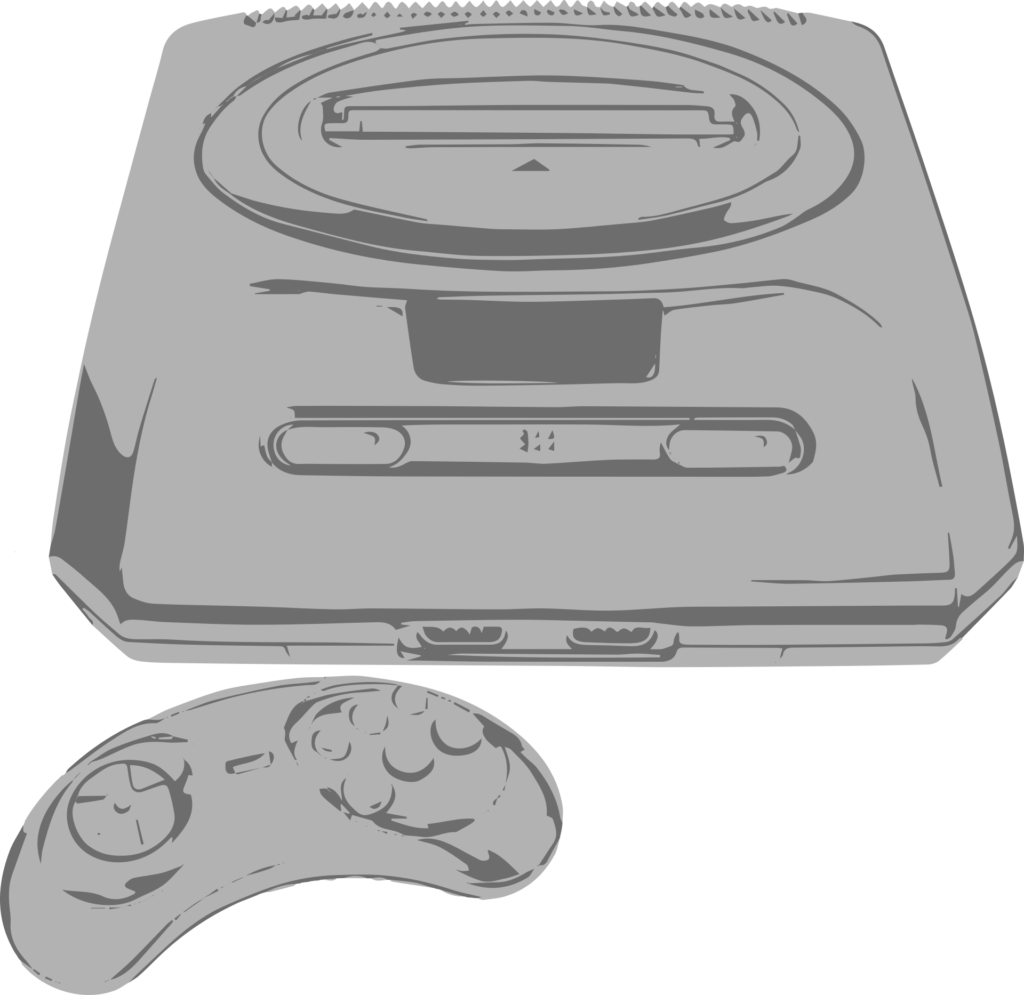The Icon of the 90s
The Mega Drive, known as the Sega Genesis in North America, is one of the most iconic video game consoles in history. Released by Sega in 1988 in Japan and 1989 in North America, the console quickly conquered the market with its advanced graphics and memorable game library.
History of the Mega Drive
Sega developed the Mega Drive as the successor to the Master System, aiming to compete directly with the Nintendo Entertainment System (NES). The 16-bit console brought significant improvements over its predecessors, offering more detailed graphics and more sophisticated sound. Among the most iconic games are “Sonic the Hedgehog,” which became Sega’s mascot, “Streets of Rage,” and “Golden Axe.”
The Mega Drive was also one of the first consoles to adopt expansions, such as the Sega CD and 32X, which added new functionalities and improved graphical and processing capabilities. Although these expansions were not as commercially successful, they demonstrated Sega’s willingness to innovate.
Fun Facts
- Different Name: While the console was known as Mega Drive in Japan and Europe, it was released as Sega Genesis in North America due to trademark issues.
- Direct Competition: The main competitor of the Mega Drive was the Super Nintendo Entertainment System (SNES), released by Nintendo. The rivalry between the two consoles became known as the “Console Wars” of the 90s.
- Third-Party Games: The Mega Drive stood out by allowing third-party developers to create games, which helped expand its game library quickly.
Console Name: Sega Genesis / Mega Drive
Release Date: October 29, 1988 (Japan) / August 14, 1989 (North America) / September 1990 (Europe)
Original Price: ¥21,000 / US$ 189
Country of Origin: Japan
Manufacturer: Sega
Discontinued In: 1995 (Japan) / 1997 (North América)
Main media: ROM cartridge
Units sold: 30.75 million
Number of Games: 902
Predecessor: Master System
Successor: Sega Saturn
Backwards compatibility: Master System
Related to:
- Sega Nomad
- Sega Mega Jet
- Sega CD
- Sega 32 X
- Multi Mega Cdx
- Super Gam*Boy
- Super Aladdin Boy
Technical Specifications
CPU: 16-bit Motorola 68000 running at 7.61 MHz
Co-processor: Zilog Z80 running at 4 MHz (Not Present in model MK-1631) controls PSG (Programmable Sound Generator) & FM Chips
RAM: 64 Kbytes
ROM: 1 Mbytes (8-Mbit)
VRAM: 64 Kbytes (Video Ram)
Graphics: VDP (Video Display Processor) dedicated video display processor for playfield and sprite control, 3 Planes, 2 scrolling playfields, 1 sprite plane
Colours Available: 512 (Max. Colours on screen: 64)
CRAM: 64 x 9-kbit (Colour RAM)
Pixel Resolution: 320 x 224, 40 x 28 text display mode
Sound: Texas Instruments PSG (Programmable Sound Generator) TI 76489 chip, Yamaha YM 2612 FM chip
Signal/Noise Ratio: 14dB
Sound Channels: 6 stereo sound channels
Sound RAM: 8 Kbytes

 Português do Brasil
Português do Brasil



